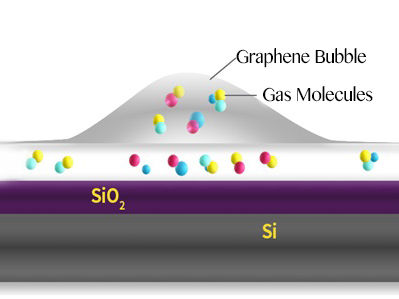New Notre Dame paper opens the door to the study of a new class of materials
Advertisement
A new paper by a team of researchers led by Karel Matous, College of Engineering Associate Professor of Computational Mechanics in the Department of Aerospace and Mechanical Engineering at the University of Notre Dame, describes how an accurate statistical description of heterogeneous particulate materials, which is used within statistical micromechanics theories, governs the overall thermo-mechanical properties. This detailed statistical description was computed using a novel adaptive interpolation/integration scheme on the nation's largest parallel supercomputers. Quantifying the morphology of many-body systems has applications in many scientific fields at a variety of length scales from molecular configurations up to structural composites and celestial bodies.
"For centuries, great minds like Kepler, Maxwell and Einstein have investigated the statistical characterization of many-body systems and the implications of small-scale structures on the macroscopic transport and mechanical properties," Matous said. "For the first time, we predicted the properties of granular Platonic solids (crystalline) packs and discovered a significant shape effect in their overall thermo-mechanical behavior. Based on our work, a large class of materials with arbitrary inclusions can now be easily studied."
The research is part of the Matous group's data-driven (image-based) multi-scale modeling strategy, where computations are guided by micro-structural experimental data.
"In my research, I study heterogeneous and multifunctional materials in extreme environments by computational and experimental means," Matous said. "These materials are essential in our daily lives and are utilized in bioengineering, the automotive and aerospace industries, micro-electro-mechanical systems (MEMS) and other applications. Heterogeneous multifunctional materials fill several pivotal roles, including structural support, self-healing capability, power generation and storage, stress mitigation and bio-filtration, just to name a few.
"These seemingly simple and elegant material functions are governed by a plethora of physics, mechanics and chemistry that test our understanding of microstructure-statistics-property relations and our capacity to tune properties at will. Many of these materials can be better understood if higher-order statistical information is retained in their well-resolved multi-scale analysis. My goal is to advance detailed understanding of mechanics and materials science through developing microstructure-statistics-property relations that can aid the development of new materials."
Matous notes that the next step in this line of work is to understand the effect of material interfaces and anisotropy (directionally dependent material behavior).
"Extending these models and accounting for interface properties and their behavior is the challenge," he said. "Also many materials are anisotropic and quantifying a higher-order anisotropic description is still an open question. Moreover, linking this work with image-based characterization techniques, such as microcomputer tomography that has become a popular method for obtaining a description of real microstructures, to analyze real material systems is a natural next step."

































































